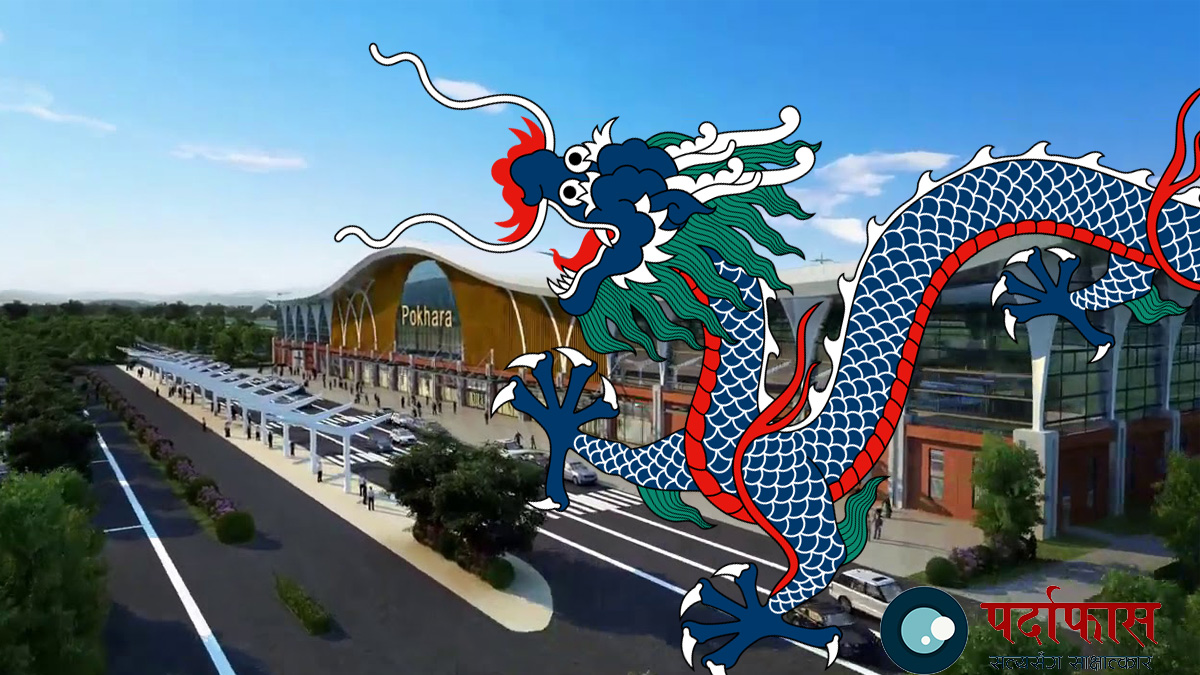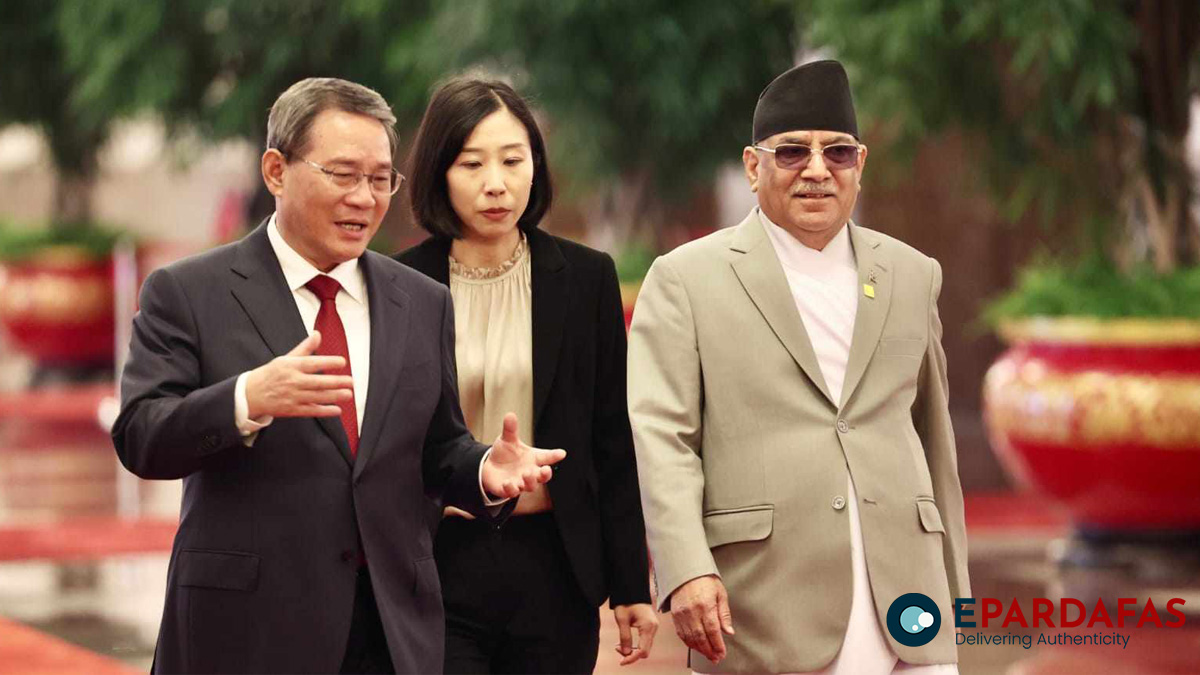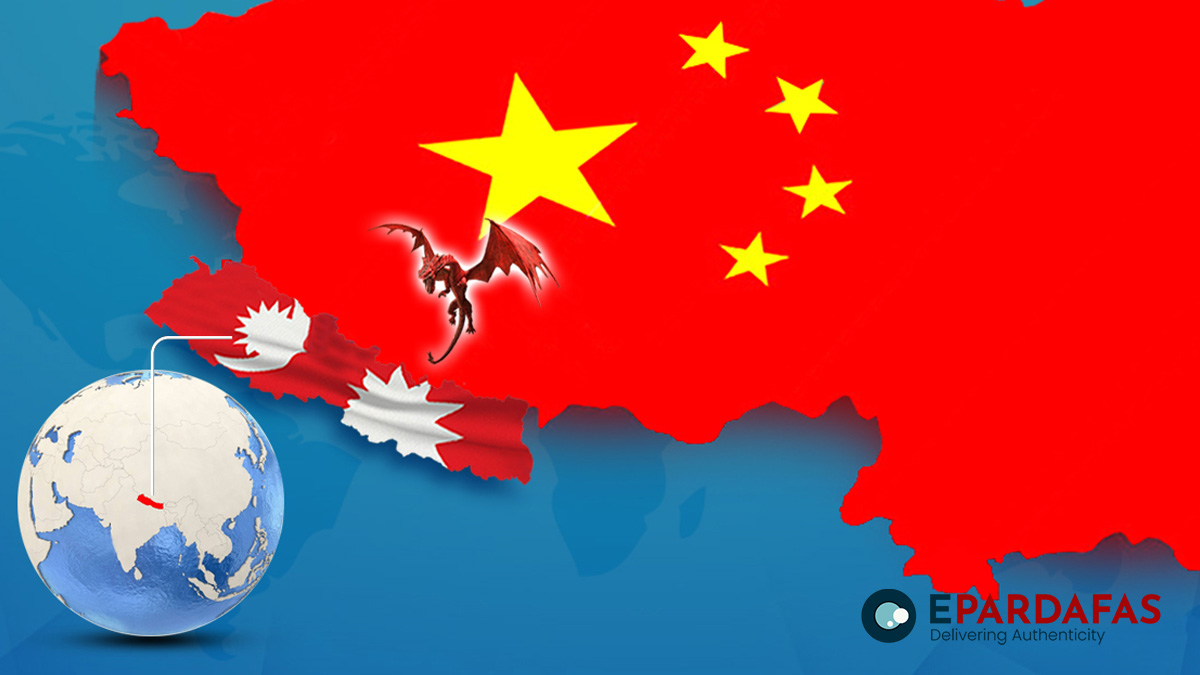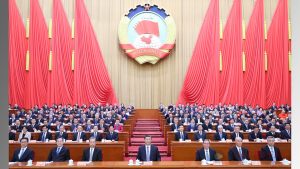
China’s Strategic Focus on Pokhara Unveiled: Projects, Controversies, and Cultural Influence
China has set its sights on the picturesque city of Pokhara, making strategic moves that go beyond infrastructure projects to include cultural events, competitions, and potential economic influence. The recent surge in China’s activities in this region has triggered speculation about the motives behind its growing interest in Pokhara.
One of the key developments is the Pokhara International Mountain Cross Country Competition, organized as part of China’s broader strategy centered on the city. Following the construction of the Pokhara regional international airport with Chinese loan assistance, the airport has been unable to operate. In response, China has initiated chartered flights to Pokhara, facilitating various programs and events.
The Mountain Cross Country Competition, scheduled after a gap of five months, is bringing Chinese athletes to Pokhara. The event involves runners from both Nepal and China covering a challenging 40-kilometer course that includes running, cycling, and boating in Fewatal. The competition aims not only to foster sportsmanship but also to strengthen the historical and friendly relations between Nepal and China.
Bishwashankar Palikhe, the competition coordinator, outlined the route, starting from Barahighat, passing through David Fall, reaching Vishwa Shanti Stupa, and returning to Phewatal by boating, concluding back at Barahighat. The competition includes various categories, such as a team race, an individual race, a public event for common citizens, and a race for students.
The Chinese Embassy in Kathmandu, in collaboration with Pokhara Metropolitan City and the Nepal Tourism Board, is actively involved in organizing these events. The competitions offer cash prizes for winners, with the first team in the cross country receiving Rs 360,000. Notably, 104 Chinese athletes, officials, and guests are arriving in Pokhara for the competition, emphasizing the significant engagement between the two countries.
However, sources suggest an underlying motive for China’s increased focus on Pokhara. The Commission for Investigation of Abuse of Authority (CIAA) has initiated an investigation into alleged corruption in the construction of Pokhara International Airport. The authority has seized documents related to the project, citing financial irregularities, manipulation of the contract process, and concerns about the quality of construction.
The Director General of Nepal Civil Aviation Authority, Pradeep Adhikari, faces accusations of facilitating an increase in the airport’s construction cost and collusion with the construction company. The investigation, prompted by complaints, has raised questions about the transparency and adherence to regulations in the airport construction.
In response to these challenges, China appears to be implementing strategic initiatives to improve the image of the airport and strengthen its presence in the region. The hosting of high-profile events, such as the Mountain Cross Country Competition and the Dragon Boat Race earlier in June, could be part of a broader plan to showcase Pokhara as a vibrant destination despite the ongoing controversies.
Moreover, China’s interest extends beyond Pokhara to the western region, including areas like Manang and Mustang, bordering China. The country is actively involved in various projects in Nepal, and Chinese businessmen are establishing themselves in the tourism sector, operating hotels and restaurants in popular tourist destinations. Expanding influence to regions connected to the Korala border aligns with China’s broader strategic goals.

The controversies surrounding Pokhara International Airport and China’s multifaceted approach raise questions about the geopolitical dynamics in the region. While China emphasizes cultural initiatives, language education, and citizen-to-citizen plans, concerns about potential illegal activities and the influence of foreign powers remain.
China is actively promoting language education and citizen-to-citizen plans in accordance with the agreements made during former Prime Minister KP Sharma Oli’s visit to China. Initially focused on major cities, China intends to extend these initiatives to rural areas. The government aims to integrate these efforts with the Global Civilization Initiative (GCI), a concept introduced by Chinese President Xi Jinping.
Additionally, China is providing assistance to Nepal Police, Armed Police, and the National Investigation Department by selling and distributing essential equipment and firearms. These activities are planned to be aligned with the President’s Global Security Initiative (GSI).
Government officials state that the realization of China’s ambitious plan in Nepal is anticipated to occur under the leadership of Prime Minister Pushpa Kamal Dahal Prachanda. It is rumored that an agreement may be reached during Prime Minister Prachanda’s visit to China.
China is set to enhance its presence in Pokhara and surrounding areas by utilizing the Pokhara International Airport. On January 1, Prime Minister Pushpa Kamal Dahal ‘Prachanda’ inaugurated the regional international airport, which was constructed with assistance from China, in the popular tourist destination of Pokhara in western Nepal. Initially, the airport served only domestic flights but, six months later, on June 21, it welcomed its first international flight from Chengdu Airport in China, operated by Sichuan Airlines.
The construction of Pokhara International Airport was funded through a loan of Rs 22 billion from China’s Exim Bank. However, Nepal is facing challenges in repaying this debt, as the country must generate profits from operating the airport to cover the loan. China has further fueled controversy surrounding the project by stating that it falls under the Belt and Road Initiative (BRI).

Chinese Ambassador to Nepal, Chen Song, once again reiterated that Pokhara International Airport is a significant flagship project of China’s ambitious Belt and Road Initiative (BRI). His remarks were made during the first international commercial plane landing event at the airport on 21st June.
Ambassador Song also previously had emphasized the airport’s connection to the BRI during its inauguration. On December 31, the Chinese Embassy in Nepal proudly declared the Pokhara Regional International Airport (PRIA) as a prominent flagship project of the BRI. However, in reality, the concessional loan agreement between the Civil Aviation Authority of Nepal and China EXIM Bank had not mentioned the BRI. The work of Pokhara International Airport had already started even before the BRI scheme enters Nepal.
In 2012, an agreement was reached between Nepal and China to build the airport in Nepal. In May 2014, two years before the loan was agreed, China CAMC Engineering was given the construction contract, at a time when China’s BRI was in a nascent phase. Chinese President Xi first announced the idea of BRI in 2013 as ‘One Belt, One Road’.
After Nepal and China signed the framework agreement on BRI in 2017, Nepal had initially selected 35 projects to be undertaken under Chinese President Xi Jinping’s flagship connectivity project. Later, upon Beijing’s request, the total number of projects was whittled down to nine with Pokhara airport off the list.
Nepal’s financial situation is currently burdened by both external and internal debts, leading to a higher allocation of funds for financial management rather than capital expenditure in the upcoming budget. This indicates that the government is facing difficulties in meeting the interest payments on the loans it has taken. Consequently, there is a possibility that China might request permission to operate Pokhara Airport, similar to how China took over the management of Sri Lanka’s Hambantota Port. Sri Lanka had built the port with financial assistance from China, but due to their inability to repay the debt, China assumed control, significantly impacting the Sri Lankan economy. A comparable situation could potentially unfold in Nepal.

China is also aiming to enhance its cultural influence in the Pokhara region. An illustration of this is the recently organized ‘Nepal-China Friendship Dragon Boat Festival.’ The Chinese Embassy in Nepal collaborated with the Nepal Tourism Board (NTB) and Pokhara Metropolitan City to host the inaugural Nepal-China Friendship Dragon Boat Race Festival in Pokhara on June 23 and 24. The Dragon Boat Festival holds popularity in China, and China seeks to introduce and promote this cultural aspect as part of its presence in Nepal. As a step towards this objective, Sichuan Airlines, a Chinese airline company, arranged direct chartered flights to Pokhara.
As China aims to enhance its presence in Pokhara and neighboring areas, the economic implications and geopolitical complexities continue to unfold. The ongoing investigation into the airport’s construction, coupled with China’s efforts to strengthen cultural ties and economic influence, creates a complex narrative that intertwines regional development, bilateral relations, and strategic interests. The coming months will likely shed more light on China’s evolving role in Pokhara and its implications for Nepal’s geopolitical landscape.
















Comments